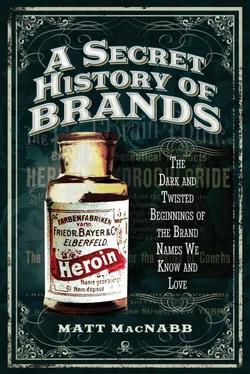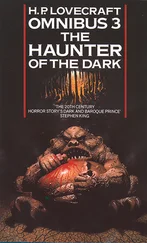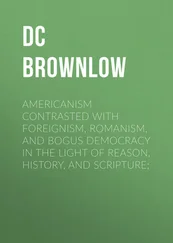Coco Chanel faced a special amount of difficulty as a woman in French society. We all know that life was far more difficult for women in the late nineteenth and early twentieth centuries, but the role of a woman in French culture was especially bleak, especially if you had any ambitions outside of marriage and motherhood. French women wouldn’t even gain their right to vote until the tail end of the Second World War, the first election that allowed women to vote in France was on 29 April 1945. It was only under the Provincial French Committee of National Liberation, headed by now legendary General Charles de Gaulle, that the right was provided to the women of France. French society has been isolationist over the years and the rights and roles of women in politics and society alike have grown at a slower pace than similarly developed nations. Germany, by contrast, has allowed women to vote since 1918, and America since 1920. The suffragette movement encountered a great deal of difficulty in piercing the thick, misogynistic cloud that loomed over French culture.
It wasn’t uncommon in French culture at the time for married men to live a nomadic and unreliable lifestyle, often travelling for work and leaving their families back at home. The duties of caring for the children, the home, and often even working on the side to help support the family, would fall upon the shoulders of the woman. Life in France was so laced with misogyny that it wasn’t until 1965 that a married woman could obtain the right to work without her husband’s consent. In the case of Gabrielle Chanel, her mother was an unmarried woman who lived with Gabrielle and her four siblings in a workhouse. A paradox of Victorian France is that an unmarried woman would be granted more rights than a married one. A single woman could own property and pay her own taxes to the state; she had more advantages and opportunities than a married woman, though even then they were limited by society. Albert did eventually marry Chanel’s mother, but only after her family paid him to do so.
When Chanel’s mother died, the reality faced by the children was bleak, at best. A girl of only 12, Gabrielle was at a tender age to lose her mother. The existence she had faced with her mother alive was destined to be difficult enough, but to lose her had to be devastating to her young psyche. This was likely only compounded by the actions of her father, Albert. A travelling street vendor wasn’t about to take on the task of raising five children. Gabrielle’s brothers were given to a peasant family and she, along with her two sisters, were brought to the convent in Aubazine by their father and abandoned. It was this harsh and painful action that would shape Gabrielle and her future, changing her fate forever.
The only hope that Gabrielle had to become the designer and woman that she truly wanted to be was to remain free, and to remain free in France she would have to stay single. This fact presented her with a new problem: it wasn’t easy for a woman to gain funding or support for opening her own business, so she would have to rely on private funding.
Gabrielle eventually began a small singing career in French nightclubs, where she went by the moniker ‘Coco’. There is a lot of misinformation out there about the life of Coco Chanel, most of which was spread by Coco herself. Over time, she was found to have provided several conflicting stories about her childhood and early life to various reporters and friends. For example, she once told editor-in-chief of Marie-Claire, Marcel Haedrich, that the origins of her nickname were from her father. ‘My father used to call me ‘Little Coco’ until something better should come along. He didn’t like ‘Gabrielle’ at all; it hadn’t been his choice.’ In an interview with The Atlantic however, Gabrielle claimed that her nickname was a shortened version of the French term coquette, which refers to a kept woman, or a woman of loose morals. Although, it has been noted that during her time as a singer in the La Rotunde club in Vichy she sang the songs ‘Ko Ko Ri Ko’ and ‘Who’s seen Coco in the Trocadero?’
Coco wasn’t shy about her sexuality and took many lovers throughout her lifetime. The life of a cabaret singer wasn’t exactly the culmination of a dream for Coco and she soon found herself a kept woman, the coquette lover of Etienne Balsan, a handsome young French socialite and the son of wealthy industrialists providing uniforms to the military. Chanel was just one of Balsan’s mistresses, but this wasn’t an uncommon part of French upper crust society.
Balsan would assist Chanel in opening her first boutique selling hats and dresses, a venture to keep her occupied while he was away tending to other interests. Balsan also introduced Chanel to Arthur ‘Boy’ Capel, who would soon become another of Chanel’s lovers. Coming from a financially troubled background, Chanel was intoxicated by what the cultural tradition of being a mistress could provide her with. The entire affair was often treated more like a business transaction than a passionate love affair, a stipulation that fit Chanel’s personality quite well. Coco could quite possibly have lived out her life in comfort jumping from lover to lover, but she had her own ideas about her journey. Coco would use the financial benefits of her relationships to launch her own fashion empire.
The Beginnings of an Empire
In 1910 Chanel opened her very first boutique at 21 Rue Cambon in Paris, designing lavish hats. The simple elegance of her aesthetic soon swept through Paris. Chanel moved on to opening more boutique-style stores, including one in Deauville in 1913. There she introduced her line of sportswear, something that would revolutionise how women dressed and create an entire genre of clothing that is more popular today than ever. In 1915 Chanel made the biggest move of her career up to that point: banking on the reputation she had built over the previous five years, she opened her first couture House in Biarritz followed by the now famous Chanel Fashion House at 31 Rue Cambon in Paris in 1918.
On 5 May 1921, Chanel made possibly her biggest lasting mark on the world: she introduced the fragrance Chanel No. 5. The scent was created by Ernest Beaux and was given its name simply because it was the fifth fragrance presented to Chanel. Coco would unveil other fragrances in her lifetime, but none so timeless as Chanel No. 5. The purpose of the fragrance was to create a unique scent to epitomise the flapper and the revolutionary spirit of the 1920s.
The 1920s was a time of change and revolution, especially in the United States. The post-war decade began with the prohibition of alcohol and women finally being given the right to vote, a right that had been granted to women over the age of 30 two years earlier in England (the right to vote was finally granted to all women aged 21 and over in 1928). It is now a well-known fact that the act of prohibition didn’t stop people drinking alcohol; in fact it simply gave rise to organised crime. The United States was littered with seedy nightclubs and speakeasies run by questionable types that would offer alcohol on the sly. These establishments became a huge part of culture throughout the 1920s, especially for the younger crowd. Along with these clubs came the new and hip sound of Jazz music; coupled with a burgeoning fashion scene and rapid economic growth, the decade grew into what we refer to now as the Roaring Twenties.
The movement of women’s fashion throughout the 1920s was towards dropping the often restrictive and punishing corsets and petticoats of past centuries in favour of a comfortable fashion; a trend that would change not only fashion, but also the way women were perceived in culture. The first major clothing revolution that Coco Chanel would mastermind could be referred to as ‘La Garconne’, which is French for ‘Boyish’. This would be used to describe what is known in America as the ‘Flapper’ fashion movement, a style that would come to define the look of the period. During the mid-1920s Coco unveiled one of her most enduring fashion contributions: the little black dress. Being responsible for some of these wildly successful fashion revolutions would be enough of a résumé to keep the Chanel name in the history books, but Coco was never one to rest on her laurels.
Читать дальше












